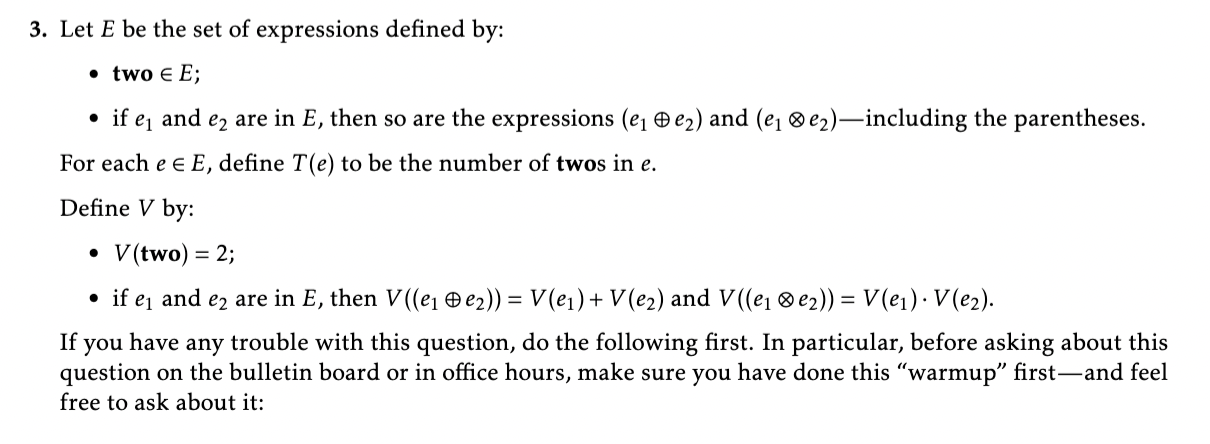3. Let E be the set of expressions defined by: two E; if e and e are in E, then so are the expressions


3. Let E be the set of expressions defined by: two E; if e and e are in E, then so are the expressions (e e) and (e e2)-including the parentheses. For each e E, define T(e) to be the number of twos in e. Define V by: V(two) = 2; if e and e are in E, then V((e e)) = V(e) + V(e) and V((e e2)) = V(e). V(e2). If you have any trouble with this question, do the following first. In particular, before asking about this question on the bulletin board or in office hours, make sure you have done this "warmup" firstand feel free to ask about it: Write out (at least) four expressions that are in E, along with their underlying trees. Write out the recursive calculation of T and V for each of your expressions. (a) Give a structurally recursive definition of T. (b) Prove, by Structural Induction, that V(e) 2. T(e) for each e = E. Note: if you need any "obvious" properties of V and/or T also prove those by Structural Induction.
Step by Step Solution
3.43 Rating (172 Votes )
There are 3 Steps involved in it
Step: 1
To tackle this question lets first define the set and the recursive functions T and V as specified t...
See step-by-step solutions with expert insights and AI powered tools for academic success
Step: 2

Step: 3

Ace Your Homework with AI
Get the answers you need in no time with our AI-driven, step-by-step assistance
Get Started


